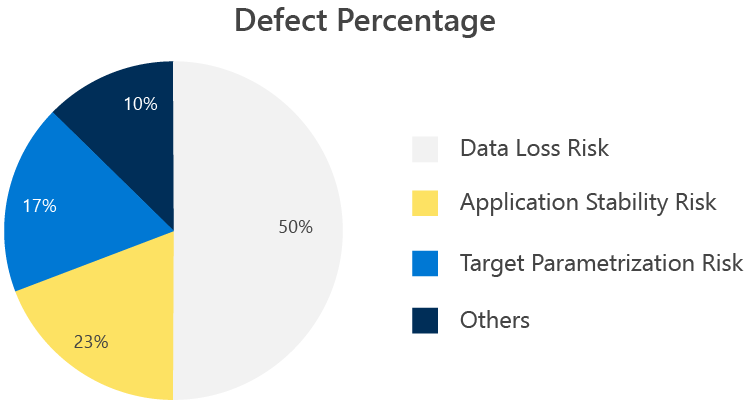The Data Migration Process & the Potential Risks
Table of Contents
Table of Contents
What is Data Migration?
Data migration is the process of transferring data from one system to another system, known as the target system, using a variety of tools and techniques.
Below are the different types of migrations that are encountered in different enterprises:
- Database Migration: This involves moving from one database software to another. E.g. your organization just bought HP Vertica and is planning to from MySQL to HP Vertica.
- Database Version Upgrade: This involves upgrading the older version of the database to the latest or most current available database version.
- System Migration: This involves migrating your current systems/ applications like CRM, Accounting, or HR to the new system.
 For big data businesses, in particular, data migration takes up a large amount of the budget. With the increasing amount of data being stored in data storage structures, the data migration process has become more complex. This makes the migration of data a much more risky endeavor.
For big data businesses, in particular, data migration takes up a large amount of the budget. With the increasing amount of data being stored in data storage structures, the data migration process has become more complex. This makes the migration of data a much more risky endeavor.
What are the Risks of Data Migration?
- Data Loss Risk
During the data migration process, data loss can occur. When the data is migrated to the new system or target system, some of the data may not migrate over from the source system. This risk can be evaded by conducting data migration testing.
- Semantics Risk
Even when the data migration process is done efficiently, semantics errors can occur. For example, if there is a field called “daily average” in the source data, the information from that field could be migrated over into a different column or field in the target system. This inconsistency in data could result in many issues for organizations and IT businesses that need to migrate their data to new environments. For this reason, data migration testing is highly recommended when migrating large amounts of business data.
- Extended Downtime Risk
The risk of extended downtime comes when the data migration process takes longer than expected. During the migration process, the source system is not active, so this poses potential risks for organizations and stakeholders.
- Data Corruption Risk
When organizations apply rules and validations on the target system, data corruption can occur. Unwanted data can be migrated into the new system, leading to potential crashes and data corruption, which can result in errors for the end user that uses the application.
- Application Stability Risk
The target application, or target system, can be unstable for a number of reasons, including improper development, improper coding of the new application, or improper coding of business requirements into the new system. These issues increase the risk of the new system being unable to fulfill business needs for end users.
- Orchestration Risk
With orchestration risk, the issue occurs when the processes of data migration are not performed in order. The order of data migration is extremely important, especially since there are varied dependencies between the various business objects.
- Interference Risk
Interference risk is particularly problematic when multiple stakeholders make use of the application during the migration process simultaneously. An example of this risk affecting business operations can occur when a stakeholder locks a particular table, making it impossible for other stakeholders to make use of the same table.
- Target Application Parameterization Risks
With parameterization risks, the issue always lies with the target application. The target system can become incompatible with data migration programs if there are few restrictions, potentially leading to errors in the new system. Data migration testing can combat these risks.
 With data migration, the risks can be great, but you can protect your data during the data migration process. One of the first things to consider is developing a thorough strategy and plan of attack. Every step, from before the migration process to after the migration process, must be carefully planned so that proper implementation of the migration programs can be ensured. In addition to having a rock-solid data migration strategy, data migration testing is highly recommended.
With data migration, the risks can be great, but you can protect your data during the data migration process. One of the first things to consider is developing a thorough strategy and plan of attack. Every step, from before the migration process to after the migration process, must be carefully planned so that proper implementation of the migration programs can be ensured. In addition to having a rock-solid data migration strategy, data migration testing is highly recommended.
We’ll cover the various data migration testing techniques that can help you do the data migration data successfully in our next iceDQ blog.
Share this article




